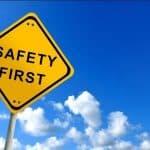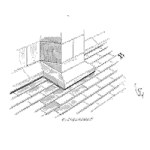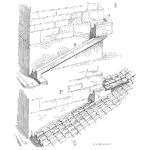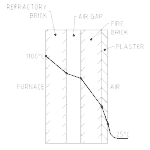
We provide business solutions. How can we prove it? This video provides the basis for our experiences with results. [Read more…]
Your Reliability Engineering Professional Development Site
Find all articles across all article series listed in reverse chronological order.
by Perry Parendo Leave a Comment

We provide business solutions. How can we prove it? This video provides the basis for our experiences with results. [Read more…]

When oil in gearboxes become contaminated there is a rapid loss of bearing operating life. It is critical that metal particles, dirt, sand, oxidisation products, etc be removed from the oil before they gouge and tear-up the finely toleranced machine parts. Oil replacement, contamination prevention and oil filtration are common practices religiously adopted by the best in the equipment reliability management business. This article explains the fine requirements for successful contamination control to insure long trouble- free equipment life. [Read more…]

Guest Post by James Kline (first posted on CERM ® RISK INSIGHTS – reposted here with permission)
In other pieces the Lloyd’s of London City Risk and the Natural Hazard Mitigation Saves studies were discussed. It was noted that both studies provide an assessment of the costs associated with the adverse impact of risk events. The Natural Hazard study focused on natural Hazards, while the Lloyd’s study incorporates both man-made and natural hazard risk events.
This piece will examine the policy recommendations made by the Organization for Economic Cooperation and Development (OECD) for managing Critical Risks and its relationship to ISO 31000:2018. [Read more…]

In Part 1 of this article series, we explored a simplified project management process using a phase/gate structure that enables a robust project planning and execution thought process. Now let’s identify some deliverables within each of the phases.
These deliverables would be required and reviewed at each of the gates. Below is a brief description of each:
by Adam Bahret Leave a Comment
by Adam Bahret Leave a Comment

“Use Case 7” is a concept I am rolling out. Use Case 7 is the way a customer may use your product in a manner that is way beyond anything you expect.
Examples:

In nearly 40 years I’ve seen it all, from those who are proud to be the best to plant sites that are in such a deplorable state, you hope you get through the tour without some type of injury, fire or explosion.
The first thing I learned when I began providing Asset Management and Reliability Centered Maintenance services as a consultant was how lucky I was to have worked my first 19 years for a company who took Employee Health, Safety and Environment seriously. In that time, I don’t remember ever wondering if the people I worked with or the Managers I worked for considered Health, Safety and Environment as the top priority. It was stated almost every day and reinforced with every job we performed through lock-out, tag-out procedures.
by Perry Parendo Leave a Comment
Often times DOE is considered a manufacturing tool. However, it can be used upstream during R&D and Operational Qualification (OQ) activities. There is much more leverage in this situation. A case study is provided from a client organization to bring the principles to life. This video is the slides and audio recording of the presentation at MDM Minneapolis, October 28, 2013. [Read more…]

Steam boilers not used for power generation and of smaller size and energy output are termed packaged boilers. The heat source is usually either electric coils or a burning fuel. When a flame is used to heat the water it is known as a fired packaged boiler. Fired boilers are considered efficient steam generators with about 85% of the available energy converted to steam. They can be of water-tube or fire-tube design. Boilers incorporate many key aspects of heat transfer to create steam from water. This article describes how fired boilers work and their key components. [Read more…]
by Greg Hutchins Leave a Comment

Guest Post by Geary Sikich (first posted on CERM ® RISK INSIGHTS – reposted here with permission)
Imagine that your plan has been implemented as it was designed. You and your organization carried out the plan following every detail that was contained in the planning documents. Your plan has failed. That is all you know. Your plan failed. Now your challenge and that of your planning team is to explain why they think that the plan failed. You must determine how much contrary evidence (information) was explained away based on the theory that the plan you developed will succeed if you implement the steps required to respond to a disruption of your business operations. [Read more…]
by Robert Allen Leave a Comment

Organizations often accumulate a list of desirable projects, however, may not have project management bandwidth to filter or manage them effectively.
While project management is a respected discipline, the Project Management Institute Body of Knowledge (PMBOK) has swollen to several hundred pages. This level of detail and complexity makes it difficult to absorb and apply for ‘informal’ project managers. [Read more…]

In my prior article, the assumptions behind SPC were discussed in detail except for the analysis. There are two types data that may be analyzed, Counts and Measurement variables. This article focuses on normally distributed measurement variables, and the construction and usage of $-\bar{X}-$ and R charts.
[Read more…]
by Adam Bahret Leave a Comment

by Perry Parendo Leave a Comment

We are often hearing about the shortage of skilled workers. Why is this? What can you do to address it? We believe there are a few reasons for it and we can help you overcome them. This can help you achieve a cost effective competitive advantage. [Read more…]
by Mike Sondalini Leave a Comment

Heat is energy and its nature is to flow from a state of high excitement to one of low excitement. Heat is transferred from a hot place to a cold place by convection, conduction or radiation. This article explains the three modes of heat transfer and provides simple examples of each. Methods to reduce and increase heat transfer are also presented. [Read more…]